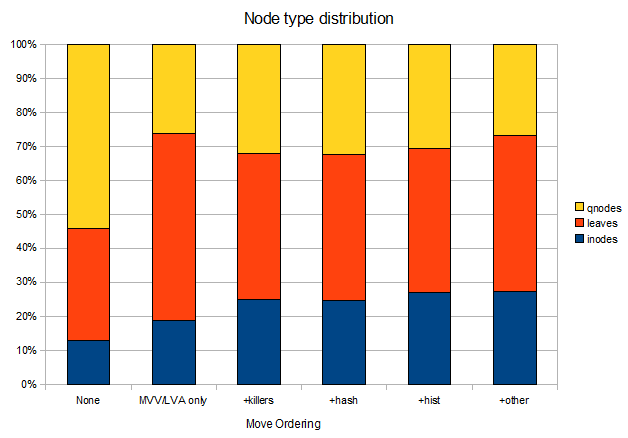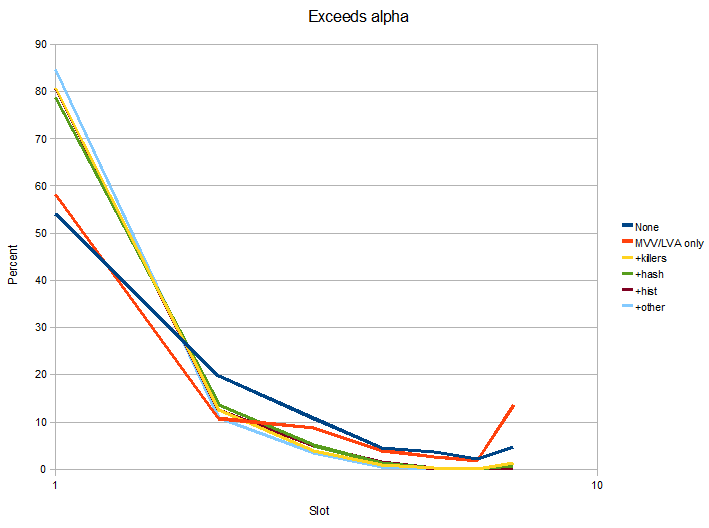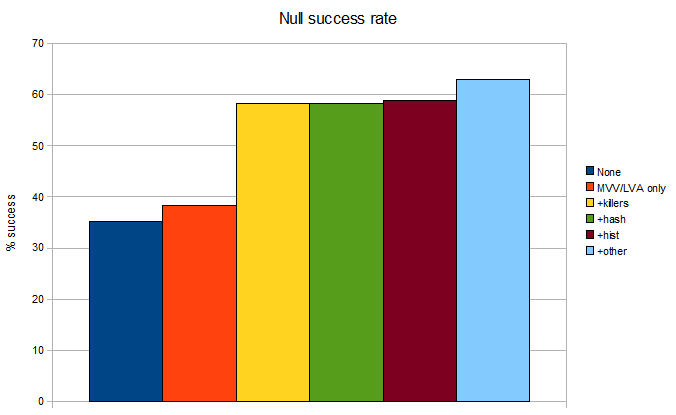This is what i am getting from the opening position:
Code: Select all
Welcome to Vlad Tepes 6000 00.00.02
Type "help" for help
sd 10
go
+-----------------------------------------------------------------------------+
|Depth Value Time Nodes PV |
+-----------------------------------------------------------------------------+
1 0.40 0.000 22 1. Nf3
2 0.00 0.000 85 1. Nf3 Nf6
3 0.40 0.015 609 1. Nf3 Nf6 2. Nc3
4 0.00 0.015 2013 1. Nf3 Nf6 2. Nc3 Nc6
5 0.10 0.031 18778 1. Nf3 Nf6 2. Nc3 Nc6 3. d4
6 0.00 0.062 66433 1. Nf3 Nf6 2. Nc3 Nc6 3. d4 d5
7 0.10 0.405 538625 1. Nc3 Nf6 2. e4 Nc6 3. Nf3 d5 4. e5
8 0.00 1.716 2151545 1. Nc3 Nf6 2. e4 Nc6 3. Nf3 d5 4. e5 d4
9 0.12 12.761 16330235 1. Nc3 Nf6 2. d4 d5 3. Bg5 Ne4 4. Nf3 Nc6
5. Rc1
10 0.04 89.092 104777349 1. Nc3 Nf6 2. d4 d5 3. Bg5 Ne4 4. Nf3 Nc6
5. Rc1 Be6
+-----------------------------------------------------------------------------+
|Nodes: ab leaf all cut pv |
| 104777349 79.67% 2.08% 14.83% 0.01% |
+-----------------------------------------------------------------------------+
|Cut: first second third fourth fifth more|
| 61.93% 11.11% 6.70% 3.68% 2.37% 14.21%|
+-----------------------------------------------------------------------------+
|Nodes: q q/ab all cut pv pat|
| 130645162 124.69% 25.63% 15.70% 0.01% 58.67%|
+-----------------------------------------------------------------------------+
|Cut: first second third fourth fifth more|
| 97.02% 2.34% 0.53% 0.09% 0.02% 0.00%|
+-----------------------------------------------------------------------------+
|Hash: size fill get hit miss cut|
| 2097152 100.00% 104688671 4.31% 95.69% 3.68%|
+-----------------------------------------------------------------------------+
Vlad Tepes 6000 plays b1c3
I would appreciate it if you would share your stats/thoughts with me.


